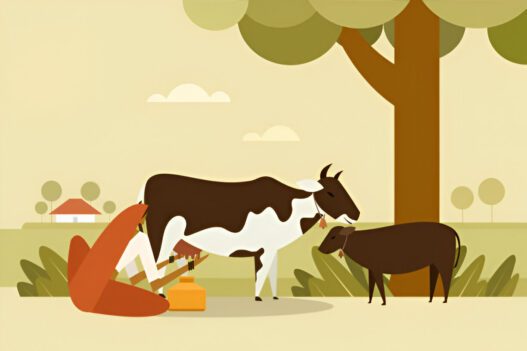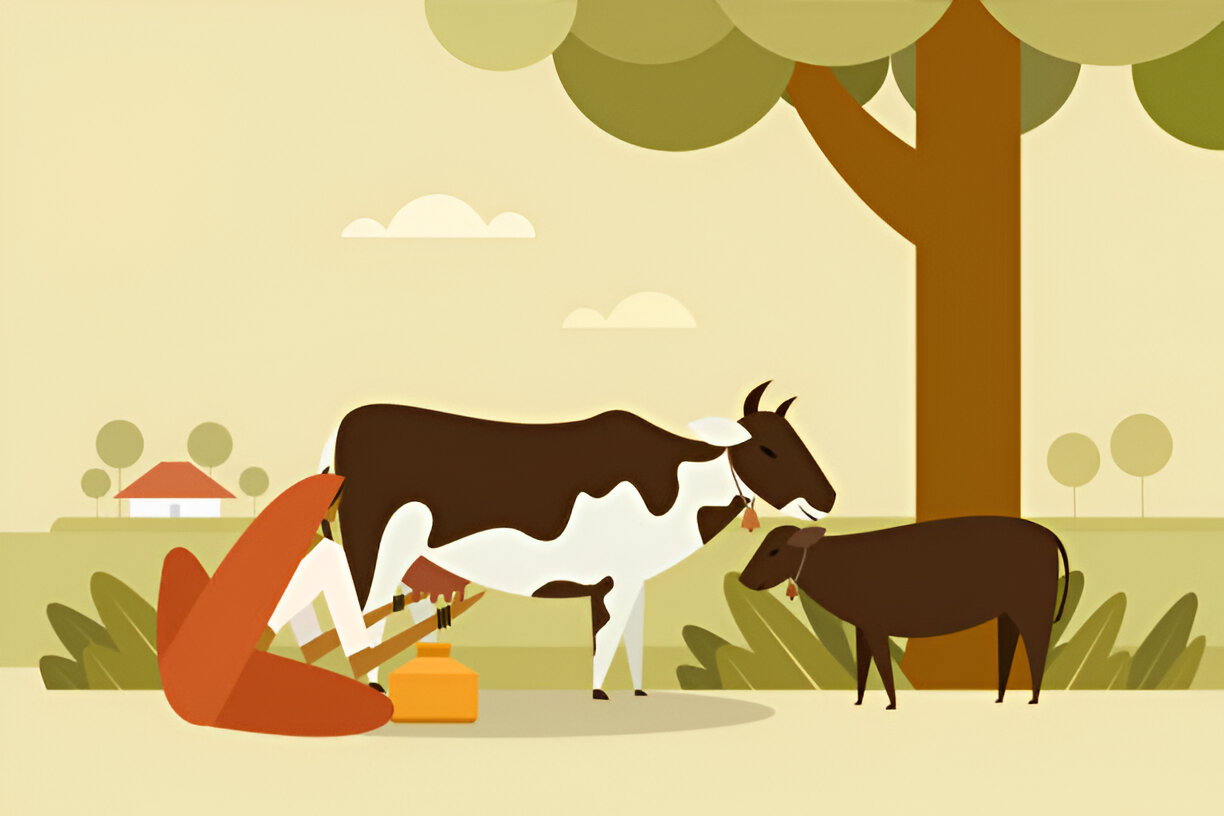The Integrated Sample Survey (ISS) scheme is a crucial initiative by the Indian government to estimate the production of key livestock products such as milk, eggs, meat, and wool. Implemented by the Department of Animal Husbandry & Dairying, the ISS provides vital data for policy formulation and program evaluation in the livestock sector. This article will explore the objectives, processes, and components of this important survey.
Core Objectives: Comprehensive Data Collection
The broad objectives of the ISS scheme are to:
-
Provide accurate estimates of milk, egg, meat, and wool production at national, state, and district levels.
-
Generate seasonal production estimates, based on data collected during summer, rainy, and winter seasons.
-
Determine average yields for milk, eggs, wool, and meat across different livestock types.
-
Calculate per capita availability of milk and eggs.
-
Compile comprehensive state-wise data on veterinary institutions, infrastructure, artificial insemination, and other key statistics.
-
Strengthen data dissemination through online data capture and transmission.
Key Features of the ISS: Efficiency and Reliability
The ISS is designed to provide timely and reliable data. Key features include:
-
Annual Surveys: Data is collected through annual sample surveys that capture seasonal variations in production.
-
Digitalization: Transition from paper schedules to computer-assisted personal interviewing (CAPI) and a new eLISS mobile app and web portal are being used for data collection, significantly improving data accuracy and collection efficiency.
-
Comprehensive Coverage: Surveys are conducted in rural areas across all States and Union Territories with targeted coverage of 5% of villages per season, and select urban wards in every district.
-
Data Dissemination: The annual publication “Basic Animal Husbandry Statistics” is created using the data collected which is used for policy and planning.
Sub-Components: A Detailed Structure
The ISS scheme comprises several key sub-components:
-
Salary: Provides financial assistance for personnel involved in data collection. The central government contributes 50% for most states, 90% for NER states, and 100% for UTs.
-
TA/DA: Covers travel and daily allowances for field staff, fully funded by the central government.
-
Refresher Training: Supports training programs to ensure field staff are updated on the survey methodology. The central government provides 100% assistance.
-
IT Solutions: Focuses on creating IT infrastructure and software for efficient data collection and dissemination. The central government provides 100% assistance.
Target Beneficiaries: Guiding Policy and Research
While not directly providing benefits to individuals, the scheme’s data serves a wide range of stakeholders:
-
National Accounts Division, Ministry of Rural Development, and Department of Agriculture.
-
State and UT governments involved in livestock policy formulation.
-
Private agencies and research institutions.
-
Policymakers, researchers and other entities to help in understanding and formulating policies in the livestock sector.
Data Collection and Timeframes: A Structured Approach
The survey is conducted from March to February, divided into three seasons (summer, rainy, and winter). The data is collected by trained enumerators and is then analyzed and validated by supervisors, district nodal officers, and state nodal officers. The entire process, from data collection to dissemination, is closely monitored by the Department of Animal Husbandry and Dairying.
Fund Flow and Monitoring: Ensuring Accountability
The scheme’s funding is released by the central government to states and UTs. The funds are used for salaries, allowances, training, and IT infrastructure. Each State has a nodal officer to ensure implementation and to provide regular progress reports. The scheme is reviewed annually by a Technical Committee of Direction (TCD), which assesses progress and recommends improvements. The financial progress of the scheme is tracked through monthly expenditure statements.
Conclusion
The Integrated Sample Survey (ISS) scheme is a cornerstone of India’s animal husbandry data collection and analysis. It provides reliable information to policymakers and stakeholders, contributing to informed decision-making and effective planning in the livestock sector. The scheme’s focus on digitalization and comprehensive data collection will continue to support sustainable growth and development in the industry.




